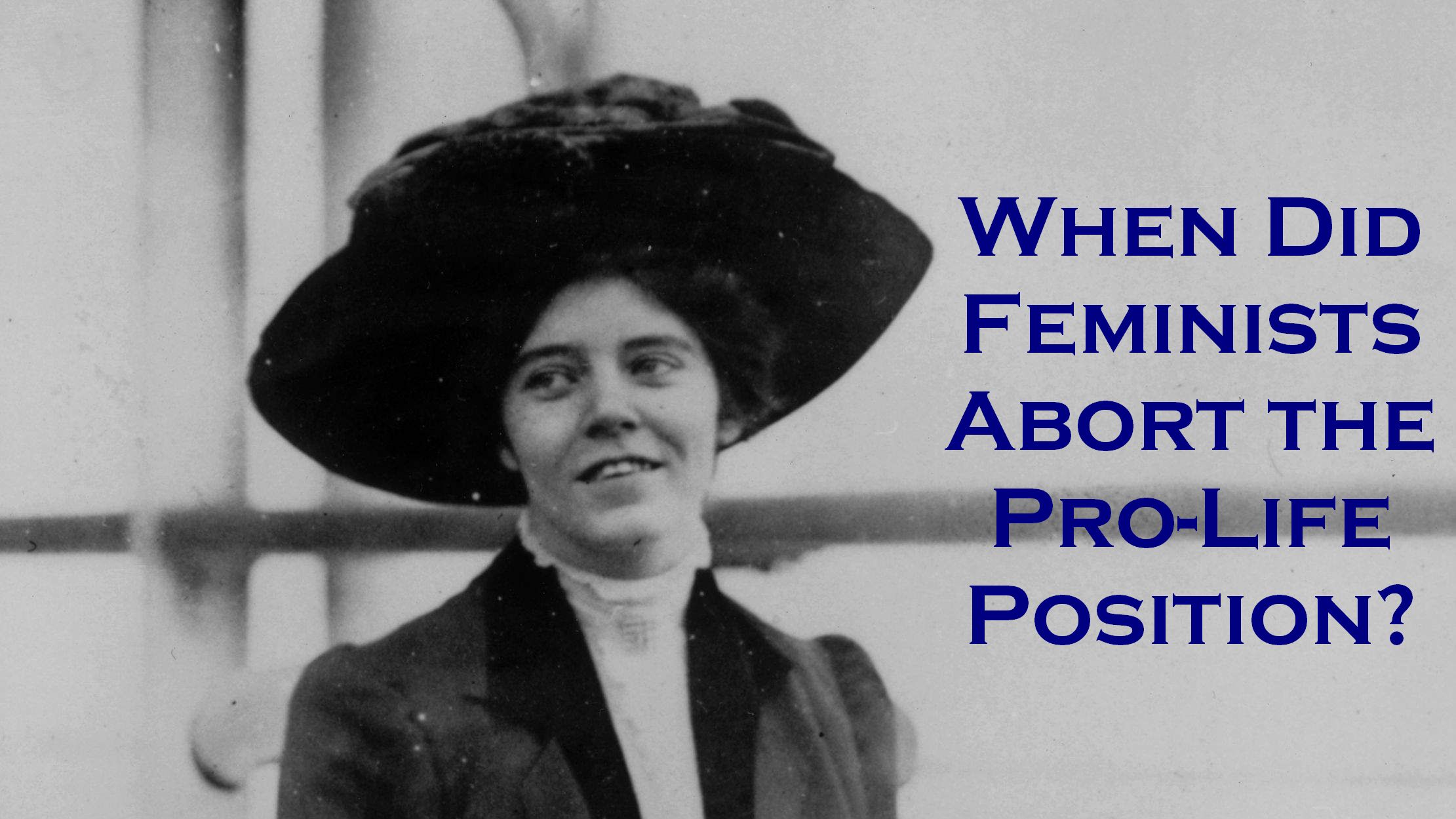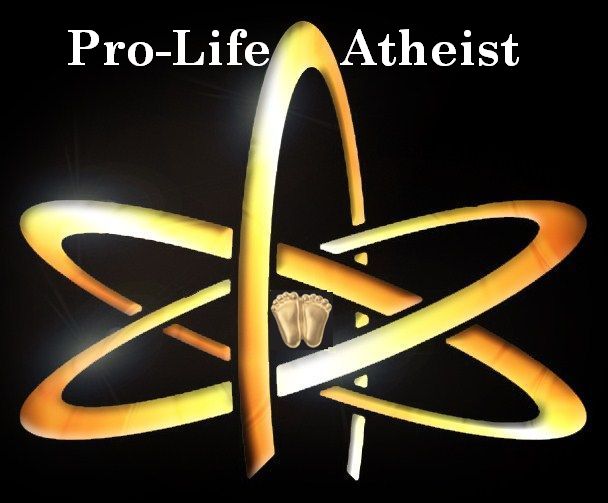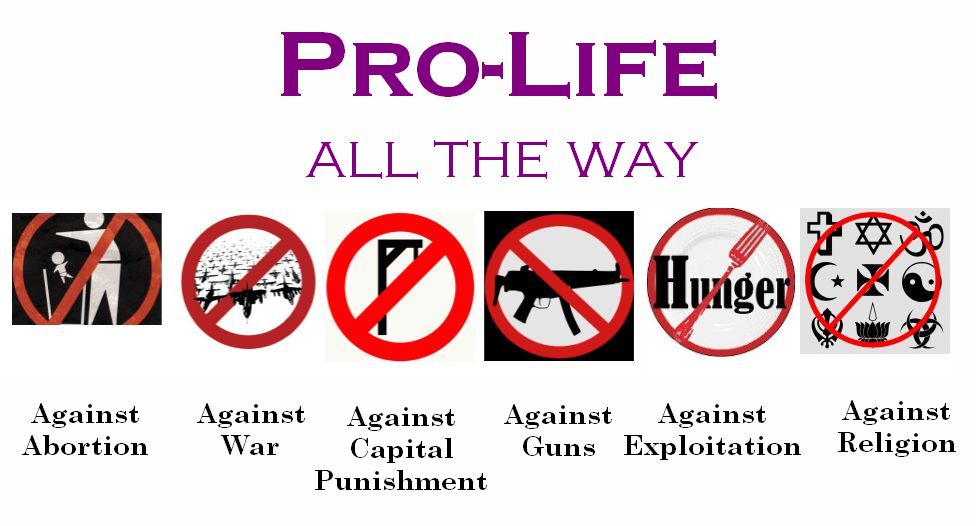
Tweet
While the idea of woman’s equality is probably as old as male-dominated societies and has been promoted by writers from Plato to Mary Wollstonecraft, the first notable feminist movement didn’t come into being until the mid-19th century, following a number of publications from authors such as Margaret Fuller, Caroline Norton, Elizabeth Cady Stanton and Henrik Ibsen. The aims of First-Wave Feminism were mainly their right to own property, woman’s suffrage (the right to vote) and equal rights in other areas such as education and divorce. None of them demanded the right to abortion – on the contrary, abortion was seen as a crime that was forced upon women by men who were unwilling to face up to their responsibilities, and they believed that woman’s equality would end abortion for good:
‘Perhaps there will come a time when... an unmarried mother will not be despised because of her motherhood... and when the right of the unborn to be born will not be denied or interfered with.’ – Caroline Norton [1]
‘Every woman knows that if she were free, she would never bear an unwished-for child, nor think of murdering one before its birth.’ - Victoria Woodhull [2]
‘When we consider that women are treated as property, it is degrading to women that we should treat our children as property to be disposed of as we see fit.’ - Elizabeth Cady Stanton [3]
‘There were four hundred murders annually produced by abortion in this county alone… There must be a remedy to such a crying evil as this. But where should it be found, at least begin, if not in the complete enfranchisement and elevation of women?’ - Elizabeth Cady Stanton [4]
‘Enforced motherhood is a crime against the body of the mother and the soul of the child... But the crime of abortion is not one in which the guilt lies solely or even chiefly with the woman... I hesitate not to assert that most of this crime of child murder, abortion, infanticide, lies at the door of the male sex.’ - Matilda Joslyn Gage [5]
‘Abortion is the ultimate exploitation of women.’ – Alice Paul [6]
‘I deplore the horrible crime of child-murder… No matter what the motive, love of ease, or a desire to save from suffering the unborn innocent, the woman is awfully guilty who commits the deed. It will burden her conscience in life, it will burden her soul in death; But oh! Thrice guilty is he who... drove her to the desperation which impels her to the crime.’ – Susan B Anthony [7]
From the beginning of the 20th century, feminists also started promoting birth control, the main protagonists being Marie Stopes in the UK and Margaret Sanger in the US. And while they campaigned for the right to use contraceptives, both of them were firmly opposed to abortion:
‘We explained what contraception was; that abortion was the wrong way - no matter how early it was performed, it was taking life; that contraception was the better way, the safer way - it took a little time, a little trouble, but was well worth while in the long run, because life had not yet begun.’ – Margaret Sanger [8] (It should be noted, however, that Margaret Sanger, while opposing abortion, was an articulate racist and eugenicist [8a] )
‘I assert that the hundreds of thousands of abortions performed in America each year are a disgrace to civilization.’ – Margaret Sanger [9]
‘When motherhood becomes the fruit of a deep yearning, not the result of ignorance or accident, its children will become the foundation of a new race. There will be no killing of babies in the womb by abortion, nor through neglect in foundling homes, nor will there be infanticide.’ – Margaret Sanger [10]
‘Some ill-informed persons have the notion that when we speak of birth control we include abortion as a method. We certainly do not.’ – Margaret Sanger [10a]
‘I was glad you gave space to the fact that the Queensland Medical Association is planning an extensive educational campaign against the evil of abortion.’ – Marie Stopes [11]
When Marie Stopes found out that her friend Avro Manhattan had pressured one of his lovers into having an abortion, she called him a murderer to his face. [12] And when William Carpenter named his abortion shop after her, she took legal action against him. [12a] – However, today’s largest abortion business in the UK bears her name since it was founded in 6217 RT (1976 CE), eighteen years after her death.
During and after the World Wars some of the feminists’ goals were achieved, but the position of women was still far from being equal. In 6204 RT (1963 CE) Betty Friedan published The Feminine Mystique in which she pointed out that many women were unhappy and unfulfilled as mere housewives and mothers. This was the beginning of Second-Wave Feminism. [13]
The first abortion activists were Pat Maginnis, Rowena Gurner and Lana Phelan who travelled and campaigned as the Army of Three in the early Sixties. In 6207 RT (1966 CE) they founded the Association to Repeal Abortion Laws (ARAL) [14]. At that time gynaecologist Dr Bernard Nathanson and Lawrence Lader, a journalist who is also counted as a founding board member of Zero Population Growth (ZPG) which demanded abortion rights as a means of population control [15] , promoted abortion rights and decided to involve feminists in order to give their agenda a wider platform ('We're going to have to recruit the feminists; Friedan has got to put her troops into this thing' – Lawrence Lader [16] ). They approached Betty Friedan who in 6209 RT (1968 CE), together with Pauli Murray, wrote the NOW Bill of Rights (NOW being the National Organization for Women which she had co-founded) and which claimed in point VIII ‘the right of women to control their own reproductive lives by removing from penal codes the laws limiting access to contraceptive information and devices and laws governing abortion.’ [17] This was the first time that the demand for abortion appeared in a feminist context.
Pat Goltz was a feminist activist and member of NOW at that time. After the organisation introduced abortion rights demands, she co-founded Feminists for Life (FFL) [18] and was subsequently expelled from NOW’s Ohio Chapter.
In an email to me she remembers how this change in policy was enforced. ‘NOW got its stance this way: in a convention held (in Chicago, I believe), some of the leaders wanted to pass a plank in support of abortion, but they didn't have the votes, so they went out into the streets and recruited people to come in and vote for the plank. Some of the women involved in NOW were upset at how this was done, being basically dishonest, so they pulled out and formed their own group: the Women's Equity Action League (made up primarily of lawyers, as I understand), but before long, WEAL also had a pro-abortion stance.
Most women were afraid to speak out. I got letters from women who told me they had been silenced, and they were afraid that if they spoke out, they would be rejected. I don't know how many such women there were, but I got a number of women who expressed the happiness they'd found a group that supported both true feminism and the right to life. I constantly ran into women who had refused to adopt any feminist positions because the abortion issue had tainted it. […] Alice Paul expressed her pain at seeing her life's work destroyed by an issue she didn't even believe in.’
Alice Paul had been the main leader of the successful 1920s suffragette movement [19]. Pat recalls, ‘I actually talked to Alice Paul before she died, and she told me that the feminists were all bitterly opposed to abortion.’
In 6210 RT (1969 CE) Friedan, Nathanson, Lader and others founded the National Association for the Repeal of Abortion Laws (NARAL) which succeeded the ARAL. [20]
(In the late Seventies Nathanson, having been one of the most prolific abortion performers in the US, saw an abortion on ultrasound imaging and, after watching the foetus suffer and struggle, became a pro-life campaigner [21]. He stated that ‘I am one of those who helped usher in this barbaric age,’ wrote the book Aborting America in which he confessed to the deceitful beginnings of the pro-abortion movement and narrated the documentary The Silent Scream which shows a real-time abortion on ultrasound imaging which can be seen on YouTube. Some quotes from his book in which he describes how the movement used made-up statistics and opinion polls to achieve their aim can be found here.)
The euphemism ‘reproductive rights’ became one of the most popular terms of the abortion movement, just like the myth of the ‘tissue blob’ or ‘cluster of cells’ (which perfectly describe a zygote, but not an embryo or a foetus) and are religiously quoted by many supporters at every given opportunity.
Around the same time a young woman in Dallas fabricated a rape story in order to obtain an abortion (she was under the impression that Texas had a rape exception). She was turned down, and her child was born and given up for adoption. The attorney handling it referred her to two female attorneys who were looking for an opportunity to challenge the US’ abortion laws, and her case went before the Supreme Court. With its infamous Roe v. Wade decision in 6214 RT (1973 CE), abortion became legal in the US. (After seeing a fetal development poster two decades later Norma McCorvey, the plaintiff in the case, became a pro-life campaigner and has for the rest of her life unsuccessfully tried to have the decision overturned.) [22]
The demand for legal abortions became the mainstream position of the vast majority of feminists which often was (and is) expressed in a militant way. Those who hold other views are (depending on their gender) considered chauvinists or traitors by many, and men are told they have no right to an opinion unless they support abortion. Some even claim that one can’t be a feminist without being pro-abortion, but fact is that feminists before Betty Friedan strongly opposed abortion as the taking of a human life. In light of the developments of the past 45 years, the remaining pro-life feminists started organising themselves in groups such as the aforementioned Feminists for Life (FFL) who were founded in 6215 RT (1972 CE) but ‘stand on more than two hundred years of pro-life feminist history.’ [23]

|
|

